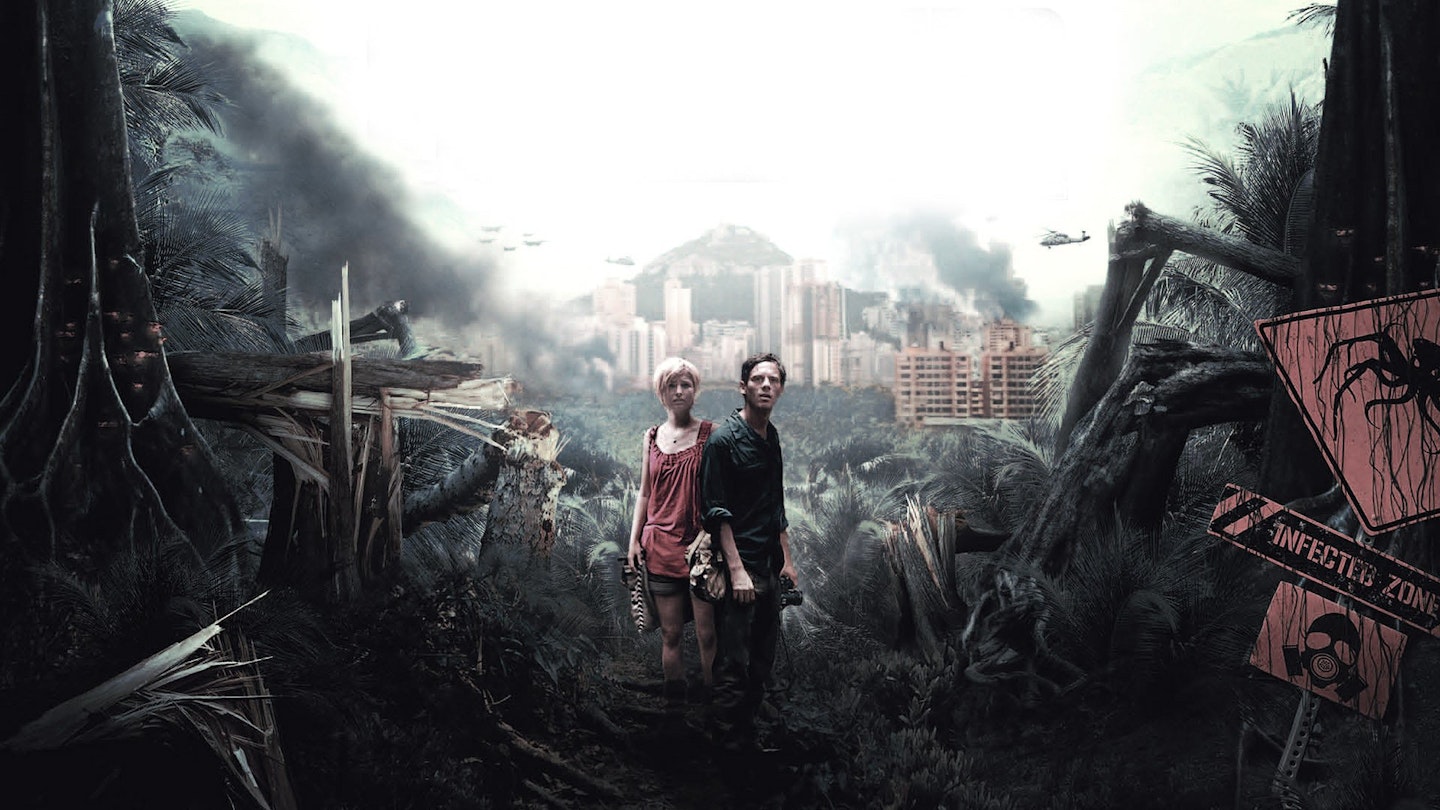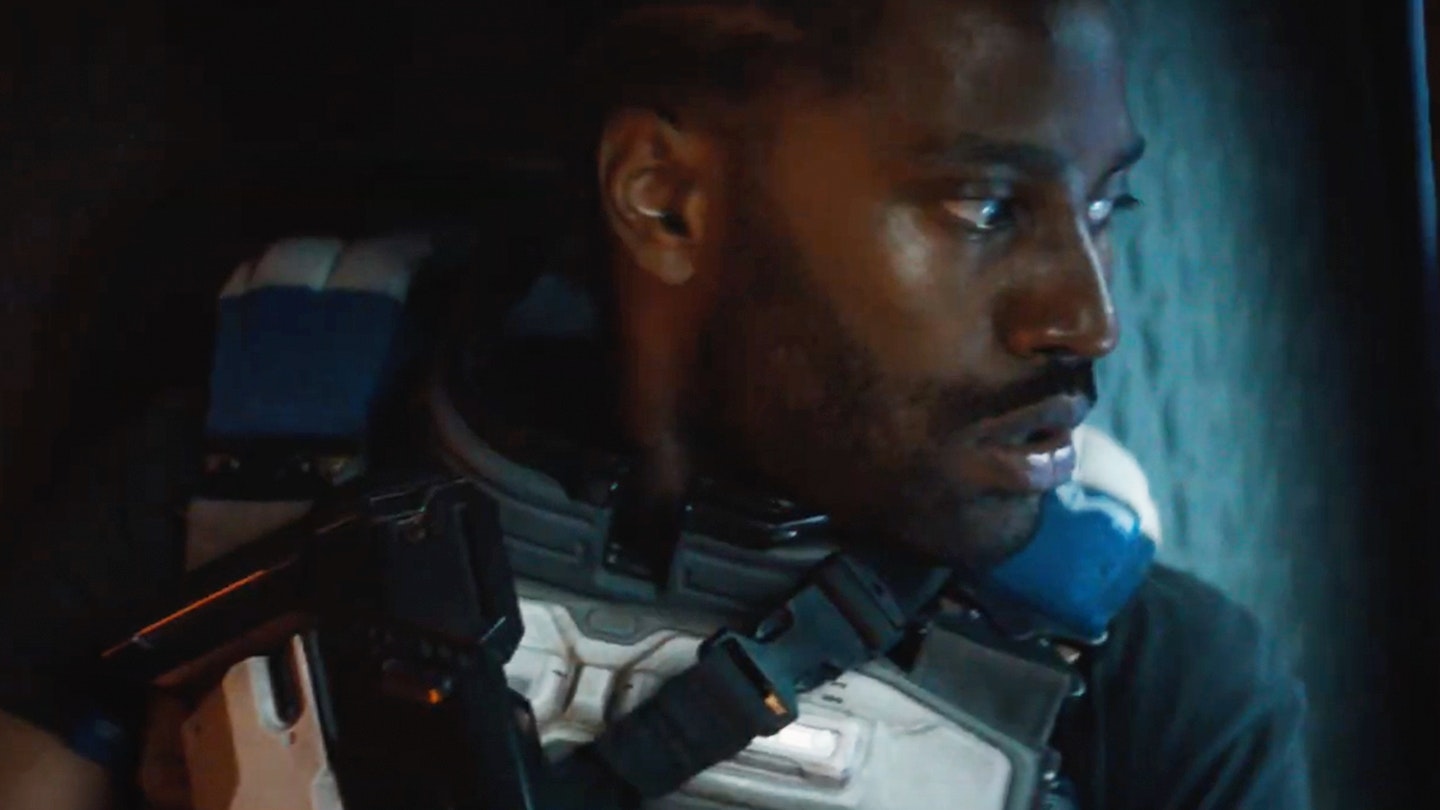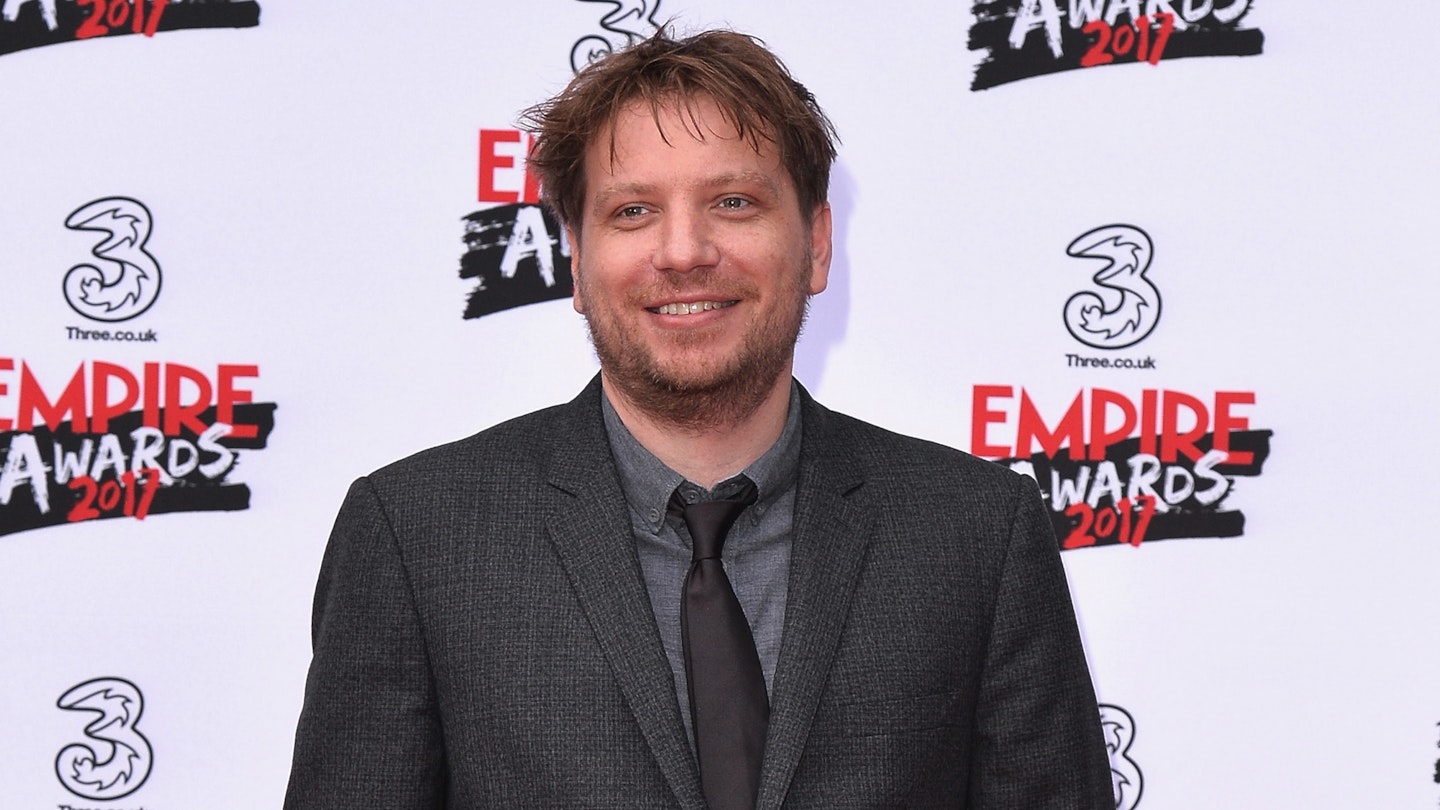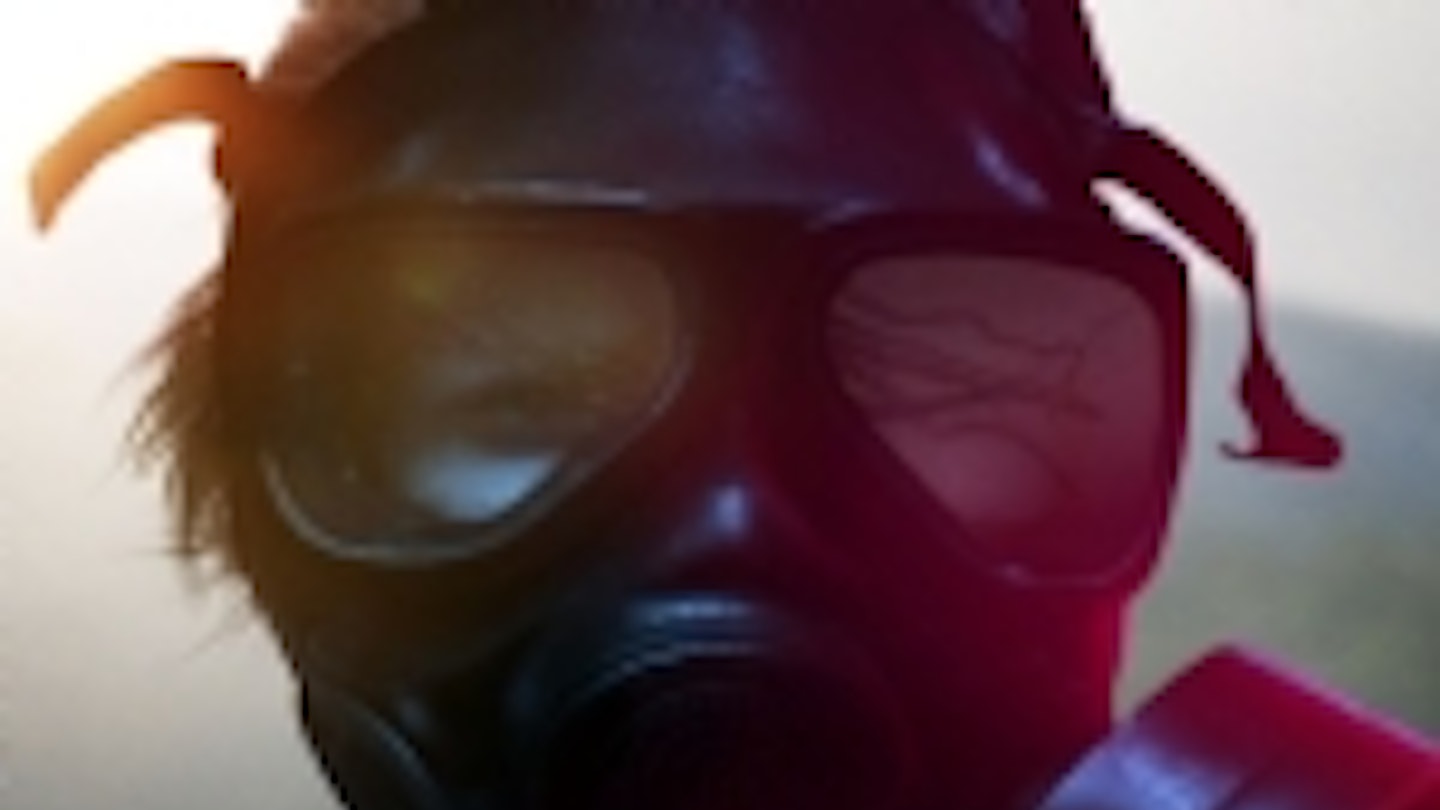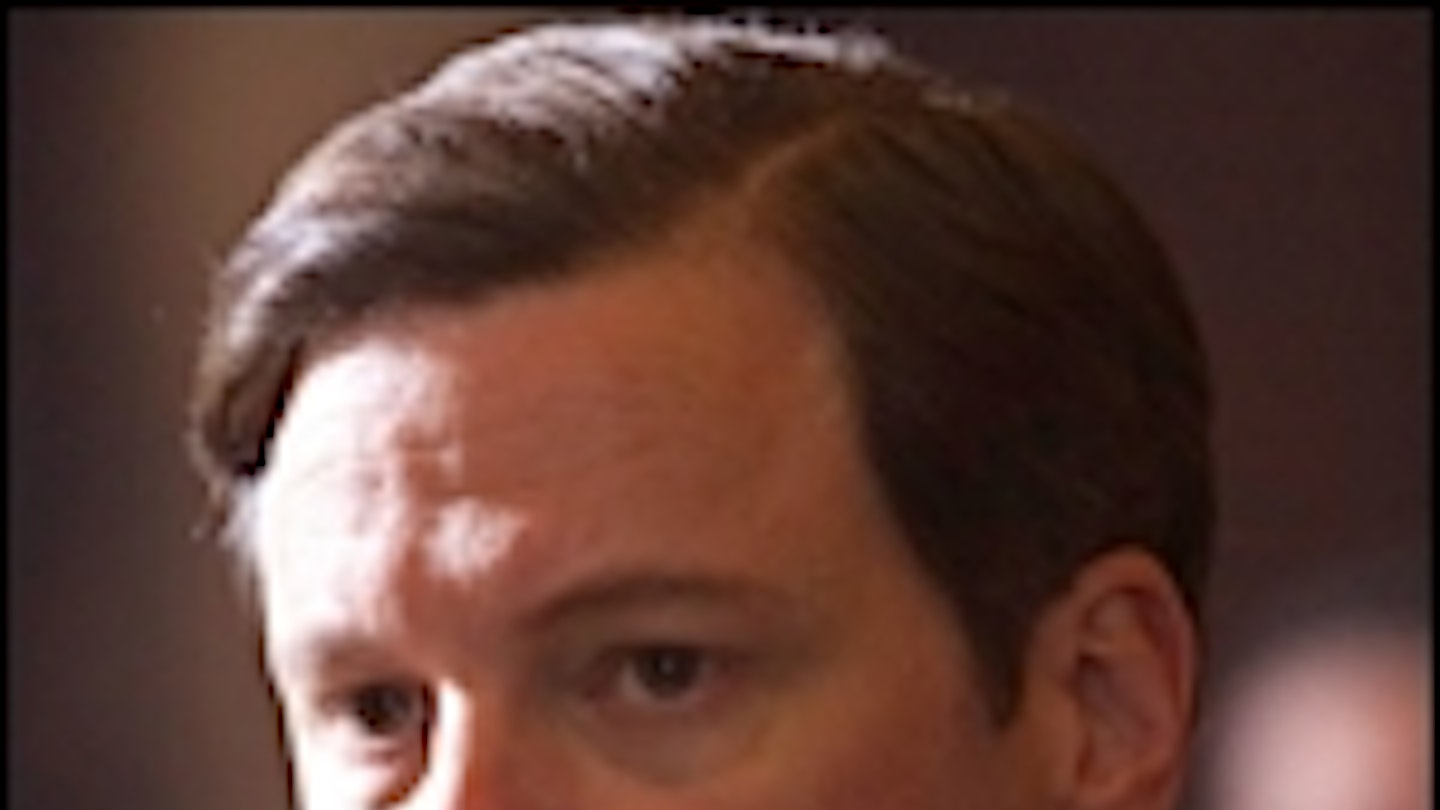Shoestring films live or die by the strength of their ideas. Often those ideas are all they have, the means by which they transcend their pecuniary limitations. And the best ideas achieve such transcendence by using those limitations. Found-footage movies seem ten-a-penny these days, but who can forget the primally terrifying impact The Blair Witch Project achieved with but three cast members, one camera and one patch of dank woodland? Open Water didn’t need more than two actors treading brine to achieve its desolate discomfort; in fact, it required it. And to put himself on the surprisingly short road to The Dark Knight and Inception, Christopher Nolan constructed for himself a noir narrative that required only a few real-location interiors, his debut Following entwined around the theme of mere petty burglary.
You wonder if Monsters — shot using one camera on location with a professional cast of two — will yet prove to be Gareth Edwards’ own Following. Indeed, comparing him with the Nolan of 1998, who then had only a few shorts to his CV, Edwards immediately appears more likely to be one day commanding vast budgets and crafting towering visual-effects spectacles. As well as having some TV directing experience (including a BBC programme on Attila The Hun and two episodes of Perfect Disasters), he’s also an established digital effects artist, and it’s this skill in particular that in Monsters serves him so well — and so well services his idea: that, quite simply, of a character-based road movie which takes place just after, or just beside, an alien invasion.
Not only does Edwards carry the credits of writer and director, he’s also Monsters’ director of photography, production designer and, crucially, visual-effects supervisor. So rather than the film’s VFX considerations being couched as the usual “Can we?” dialogues (e. g. “Can we fix that in post?”), they were more a case of “I can” — and at that with just a fraction of the processing power afforded even the sloppiest summer blockbuster. So, for example, Edwards knew that, while he couldn’t exactly have his creatures swarming around the frame like Spielberg-summoned tripods or Cameron-conjured Na’vi, he could still afford at least one full-reveal shot (and achieve this avoiding even Cloverfield’s home-movie-Godzilla aesthetic).
Frankly, anyone can shoot an on-the-hoof road-movie romance. But Edwards has gone one step beyond, shooting an on-the-hoof road-movie romance set against an epic backdrop of devastation, a ruined landscape littered with rusting hulks of military hardware and featuring giant aliens (both living and slaughtered) that are as realistic and compelling as the central human relationship.
Edwards’ creatures are astonishingly rendered: pylon-sized hybrids of octopus, giraffe and jellyfish, balletically stalking through the night, their bioluminescent tentacles seemingly as capable of tenderness as they are devastation. They are perfectly alien, existing on an entirely different scale and on an entirely different level of sentience — one which you surmise humanity couldn’t ever hope to understand. We might as well try and ask a fireworks display to take us to its leader.
Admirably, Edwards doesn’t spell any of this out — in fact, aside from one scene involving alien eggs and an explanation as to why the Zone is considered ‘Infected’, his script (or semi-script, to be more accurate) is all about suggestion rather than dictation. Comparisons with Cloverfield have been rife, as they have with Neill Blomkamp’s excellent District 9, but Monsters is far subtler, more sensitive and humane than either — which does sound strange for a movie in which an outsize extra-terrestrial hurls a car through the air.
It’s not just the blockbuster-level VFX which belie the film’s teensie budget. Edwards’ photography is rich, crisp and lush, suffering neither the muddiness of cheap film nor the coldness of digital. And despite the single-camera set-ups, non-professional supporting cast and (albeit CG-garnished) found locations, it doesn’t feel like a faux documentary, either. At times, no doubt inspired by its largely rainforest setting, Monsters even exhibits the lyrical surrealism of Werner Herzog’s jungle excursions, with vehicles stranded in canopies and one astonishing moment when a previously submerged fighter jet breaks the surface of a river, tail-fin first, like a tarnished metal shark.
The talent’s not just behind the camera. While Kaulder (Scoot McNairy) and Sam’s (Whitney Able) double-helixed character arc is familiar — how could a man and woman go on a life-changing journey and not fall in love with each other, unless it’s not happening in a movie? — the relationship beats for the most part feel natural, unforced, with the principals achieving an on-screen syncopy largely through an improvisation that’s fuelled by the fact they’re a real-life couple. Both do start as recognisable ‘types’: he the cynical professional with a well-buried heart, she the damaged little rich girl with a fat diamond on her ringfinger. And along the way, we do spot a few obvious emotional signposts. (At one point, Sam chides Kaulder for choosing a profession which depends on the suffering of others, and he points out how much more money he’ll earn for a photo of a dead infant than a happy one. No prizes for guessing what happens later when Kaulder and Sam do find a creature-slain child…) Even so, by the film’s eerily beautiful climax you’ll be praying that everything works out for them, that the couple get to spend the rest of their lives together. Able and McNairy’s simmering chemistry is undeniable, at its strongest during a playful scene in which a sozzled Kaulder clumsily attempts to seduce Sam at her hotel-room doorway.
Monsters’ relation to the mumblecore scene, that bedheaded clutch of semi-improv’d American-indie character studies, has already been noted. But it’s less a mumblecore movie with monsters than it is a sci-fi picture which never loses sight of the human factor. Like all good sci-fi — arguably all sci-fi — it’s a movie which works as allegory as well as entertainment.
It’s telling that the aliens in Edwards’ story are never referred to as ‘monsters’. The prevalent word is “creatures”. Which begs the question: to what does the film’s title, so unashamedly B movie (all it needs is a dripping font and an exclamation mark on the end), refer? One scene suggests the most obvious answer. Before entering The Infected Zone, Kaulder and Sam have a night out, their boozy revelry interrupted by the sobering sight of hundreds of candle-lit photos of casualties. But, it’s claimed, the creatures aren’t responsible for most of these deaths; it’s the imprecise and disproportionate American bombing raids on the creatures. Then there’s the sound of helicopters overhead, and the candles snuff out. Later we’re informed that the creatures never really bother anyone unless they’re bothered first. So it proves: throughout the film, there’s no creature attack that isn’t presaged by US military presence or the sound of jet turbines and gunfire, while the preponderance of wrecked-vehicle-decorated foliage suggests that such destructive hardware itself represents a monstrosity to these (most likely) unwilling immigrants.
Perhaps that’s overthinking it, but therein lies the beauty of Monsters: out of its one, strong, central idea bloom several others, ripe for the audience to pick. And that’s evidence of both shoestring and sci-fi filmmaking at its best.
